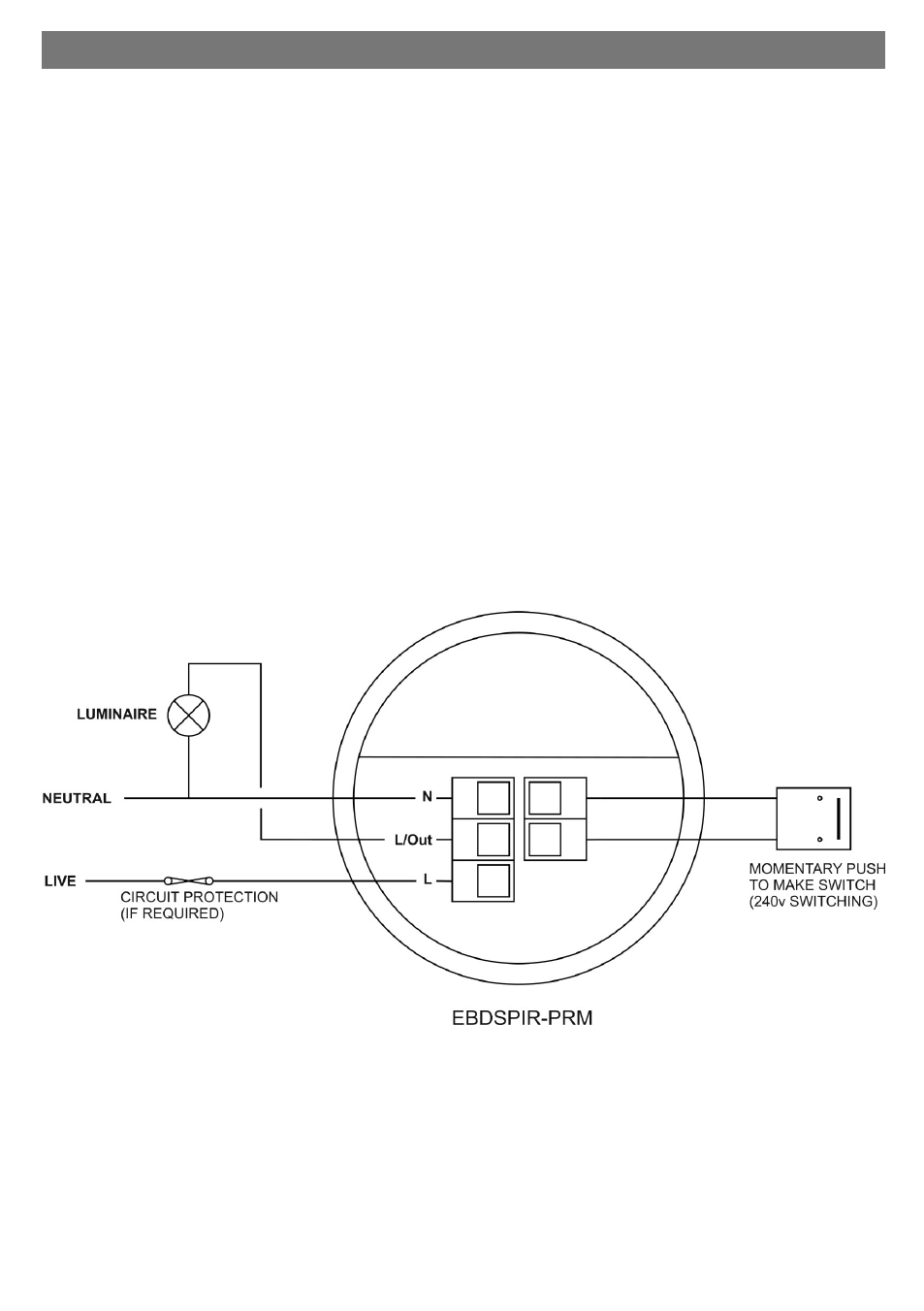Description and operation – CP Electronics EBDSPIR-PRM User Manual
Page 2

page 2
The EBDSPIR-PRM PIR (passive infrared) detector provides automatic control of lighting loads with
optional manual control. It can be used on incandescent, fluorescent and compact fluorescent lighting, and
has the added benefit of being able to connect an external switch.
Two modes of operation are available:
Presence detection:
When movement is detected the load will automatically turn on. When the area is no longer occupied the
load will automatically switch off after an adjustable time period. If an external switch is connected, this
can override the lights off (after the detection time period has elapsed it will revert to automatic operation).
An integral adjustable photocell allows the lights to be kept off if there is sufficient ambient light.
Absence detection:
The load is manually switched on using an external switch. When the area is no longer occupied the load
will automatically switch off after the adjustable time period has elapsed. Pressing the switch again during
occupancy override the lights off (after the detection time period has elapsed it will revert to automatic
operation).
In both modes of operation a short button press turns the load on whilst a long button press turns the load
off.
An integral infra-red sensor in the unit allows the unit to be programmed using the optional DD-LCDHS
programming handset. This gives complete flexibility over many of the operating parameters. Without the
handset, manual adjustments can be made to the sensitivity, lux and time settings using the controls on
the rear of the sensor head.
The UHS user handset can be used to change output lux levels and override the lights on or off.
2. Description and Operation
